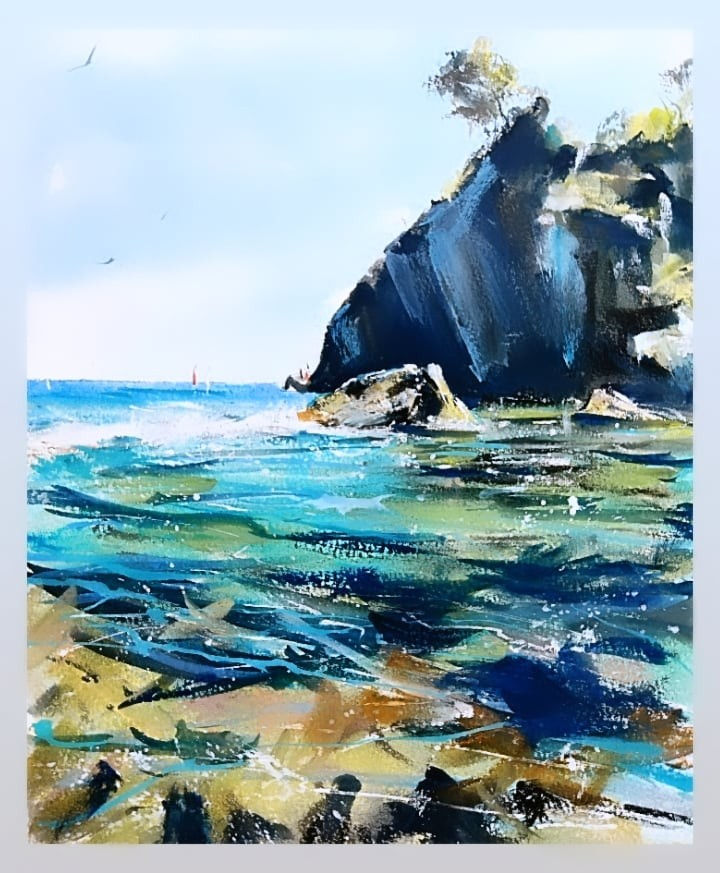
Etching by Jennifer Harris.
Ancestral Voices
Born and educated in Bristol, Jennifer Harris R.W.A. studied at the West of England College of Art. She worked as a toy designer and then display designer before becoming Art Department Technician, first at the College of St Matthias Bristol and then in the Polytechnics Faculty of Education. She moved to Devon in 1978 and now works from home.
She has exhibited in Paris and New York, in the Royal Academy and at a number of shows with the Printmaker's Council, including the Royal Festival Hall, the Royal National Theatre and both the International Mini-Print Exhibition and National Print Exhibition in London. There have also been a number of solo shows."In the main, my work falls into several broad, thematic categories. There are pictures which have been inspired by the scenery of Devon and Cornwall, those which explore the nature of distortions through reflections, and those which are simply quirky, even humorous. Several years ago I gave up etching, which had always been my main medium, now I paint in acrylics. I always think of what Turner said, 'Painting is a Rum Business.'"
Etching is the opposite of wood engraving in that the image is printed from the lines incised in the plate, rather than from the surface. It's also different from engraving, with which it's often confused, because in etching the acid does all the work.
It is a very time consuming activity, some of the prints shown here have taken up to three months to finish. Each print is unique, as it is made by hand. There are many stages in the process, starting with 'laying a ground' ( a waxy covering) over the etching 'plate' which is usually copper. This protects the plate against the action of the acid.
The design is drawn on the plate with a needle, and where the ground is removed, the acid will bite into the copper, resulting in cavities in the surface which will subsequently hold the printing ink. Heavy pressure from the printing rollers forces the ink out of the lines onto thick, dampened paper, and a print is obtained.
Using a needle will give a linear effect, tone may be added by using aquatint, a fine resin, or by pressing textures into the ground, such as leaves, fabric, tea, coffee, oats, seaweed, etc!Etching
34x54cm
Unframed
















